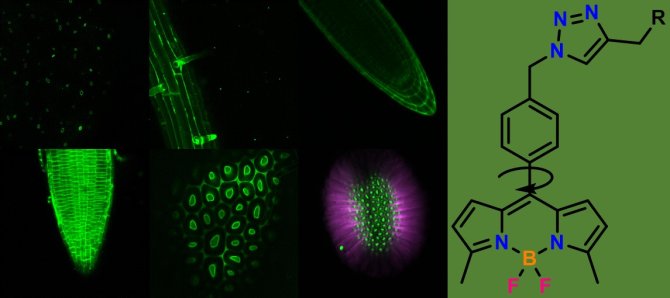News
Probing the cell wall: imaging forces using molecular sensors

All living tissues are subjected to mechanical stress. The idea that all processes in a cell are chemically regulated is slowly being replaced by a consensus that, in addition to chemical factors, mechanical cues play an important role in cell growth, differentiation and polarization. Most of the work regarding the response of cells to mechanical stress has been performed on mammalian cells while there is little known about how plants are influenced by mechanical forces. Since plant cells have strong, rigid cell wall opposed to the soft membrane of mammalian cells their response to stress is likely to be very different. The problem is: how do we sense forces on a microscopic scale? To solve this problem molecular rotors have been developed in the SprakelLab who change their fluorescent properties based on their environment. The mechanism and ‘rules’ of how to get these rotors into the cell wall remains largely unknown. That is why we are offering project where you can work on unraveling how you get these molecules to the cell wall and how they can be used to gain insight into the role of mechanical stress on these cells.
Different topics can be covered during your thesis:
1. Designing and synthesizing new molecular rotors.
2. Investigating synthetic molecular motifs to tune the specificity of fluorescent dyes and rotors.
3. Using advanced fluorescence microscopy techniques to study the cell walls of various organisms and possibly synthetic materials with molecular rotors.
Do you think one or a combination of these topics suits you? Please contact me! Together we can discuss your personal interests and set up a project that suits you best.